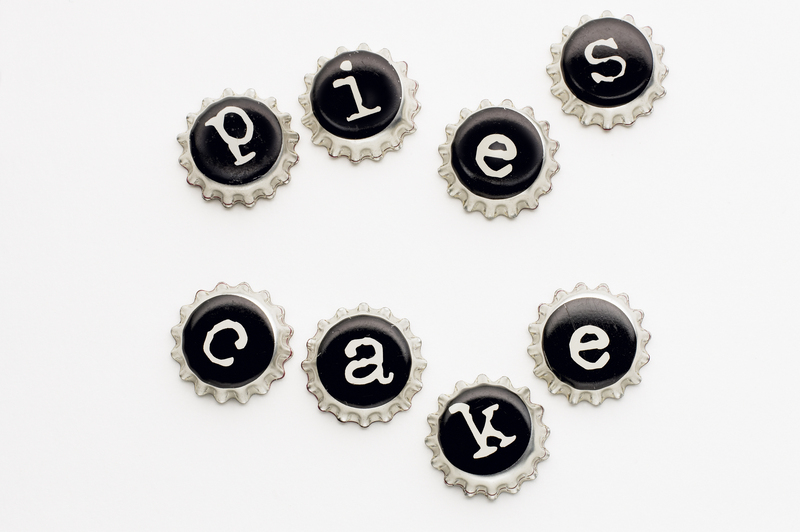Step-by-Step Guide to Disposing and Recycling Pots and Pans
Do you have old cookware cluttering your kitchen? Learning how to properly dispose of and recycle pots and pans is crucial for a cleaner home and a healthier planet. Many of us wonder about the correct methods to get rid of old, broken, or unwanted cookware without harming the environment. This step-by-step guide to disposing and recycling pots and pans will walk you through all the available options, ensuring an easy, eco-friendly process.
Why Should You Recycle Old Pots and Pans?
Whether your pots and pans are rusty, non-stick surfaces are flaking, or you just upgraded your kitchenware, it's important to dispose of cookware thoughtfully. Recycling cookware reduces landfill waste and recycles valuable materials, conserving resources and energy. Many pots and pans are primarily made of metals like aluminum, stainless steel, cast iron, or copper, all of which can be recycled and repurposed into new products.
- Reduces landfill waste
- Preserves natural resources
- Minimizes greenhouse gas emissions
- Promotes a sustainable, circular economy
Knowing how to dispose of non-stick pans, pots, and their lids correctly is a small step with significant environmental impact.

Step 1: Assess the Condition of Your Cookware
Before tossing your old pots and pans, examine their condition. If they are still functional, consider reuse or donation options. Even if there are scratches or minor cosmetic flaws, some organizations and individuals can make use of them.
- Lightly used cookware: Perfect for donation or resale.
- Damaged but functional: Consider creative upcycling or non-cooking uses.
- Broken, rusted, or irredeemable: Ready for recycling or proper disposal.
Step 2: Donation and Reuse Options
Donating pots and pans is an excellent ecological choice. Many charities, shelters, and organizations appreciate gently used cookware. Here are some convenient ways to give them a second life:
Where to Donate Old Pots and Pans
- Local thrift stores like Goodwill or Salvation Army
- Homeless shelters
- Community kitchens
- Religious or nonprofit organizations
- Online platforms (Freecycle, Craigslist, Facebook Marketplace)
Ensure that the items are clean and safe to use before donating. Many organizations won't accept pots or pans with severely damaged surfaces, particularly if the non-stick coating is peeling.
Step 3: Upcycling and Repurposing Ideas
If your cookware can't be donated but is still "in one piece," consider some DIY upcycling projects before recycling or disposal. Repurposing old pots and pans is a fun, sustainable way to avoid waste and create unique household items.
Creative Ways to Reuse Old Pots and Pans
- Turn pots into planters for your garden or windowsill.
- Use pans as decorative wall art in the kitchen.
- Create bird baths or feeders from large, shallow pans.
- Transform cast iron pans into candle molds or trivets.
Get creative -- the possibilities for upcycling pots and pans are nearly endless!
Step 4: Recycling Pots and Pans Properly
If donation or upcycling isn't feasible, recycling your old cookware is the best eco-friendly solution. However, the recycling process varies based on the type of material, coating, and local recycling programs.
What Materials Are Your Pots and Pans?
The most common types of cookware materials are:
- Aluminum (lightweight, silver color)
- Stainless Steel (magnetic, shiny finish)
- Cast Iron (heavy, dark, often seasoned finish)
- Copper (reddish metal bottom or core)
- Non-stick coatings (often black or colored surface)
Why does it matter? Different materials require specific recycling processes and may be accepted only at certain facilities.
Where Can You Recycle Pots and Pans?
- Scrap metal yards: Most accept metal cookware regardless of coating, as they are equipped to process various metals. Call ahead to confirm acceptance and ask about their preparation guidelines.
- Municipal recycling centers: Some local recycling programs accept metal pots and pans. Check your city's recycling guide before placing cookware in the curbside bin.
- Retail recycling programs: Certain big-box stores offer cookware recycling during special events (see below).
Special Note on Non-Stick and Teflon-Coated Pans
Can you recycle Teflon or non-stick pans? Most traditional recycling centers do not accept cookware with Teflon or other non-stick coatings because these chemicals require specialized handling. If your pan's coating is intact and the metal is exposed only minimally, some scrap yards may still take it. Remove plastic handles, lids, and separate mixed materials if possible.
- *Contact cookware manufacturers*: Some major brands have mail-in recycling programs or can recommend handling options for their products.
- *Earth911 Recycling Locator*: Use this tool to find a recycling facility near you that accepts non-stick pans.
Step 5: Preparing Cookware for Recycling
Preparing pots and pans for recycling properly ensures the process goes smoothly and maximizes metal recovery. Follow these simple steps:
- Remove all non-metal parts (handles, lids, silicone grips). These are often made of plastic, wood, or rubber and should be recycled or disposed of separately if possible.
- Clean off food residue and grease. Rinsing your pots and pans makes them easier to process and minimizes odor.
- Separate different types of metal cookware, especially if you're bringing items to a scrap metal yard. Labels and non-stick coatings can usually stay on, but check facility requirements.
*Tip:* If you have a large number of items, call the recycling center in advance to confirm drop-off procedures and any charges.
Step 6: Retail Take-Back Programs and Mail-In Recycling
A few specialty stores and cookware brands have started to offer recycling take-back programs for old pots and pans:
- Sur La Table: Occasionally hosts annual events where you can drop off old cookware for recycling when you buy new items.
- TerraCycle: Partners with some brands to offer mail-in cookware recycling for a fee.
- Calphalon: Offers a mail-back recycling program for its aluminum pots and pans (visit the brand's website for details).
Check with your favorite cookware retailer about any upcoming recycling events or programs -- some may even offer a discount on new purchases when you participate!
Step 7: Properly Disposing of Pots and Pans That Cannot Be Recycled
If recycling or reusing isn't possible, follow these safe cookware disposal steps:
- Remove plastic parts and recycle any recyclable that you can, such as glass lids.
- Wrap sharp or jagged pieces in newspaper or place in a sturdy box to protect sanitation workers.
- Do not place hazardous or electronic parts into regular household trash; contact your municipality for hazardous waste guidelines if you're unsure.
Never dispose of old cookware by illegally dumping it in public areas or natural spaces, as this harms wildlife and the environment.
Frequently Asked Questions About Disposing and Recycling Pots and Pans
Can I put old pots and pans in my curbside recycling?
In most areas, pans, pots, and cookware are not accepted in residential curbside recycling bins due to their size, shape, and specialized material. Instead, use a scrap metal yard or your local recycling center. Check your municipality's official waste disposal guidelines for specific details.
Are non-stick pans recyclable?
Recycling non-stick or Teflon cookware is tricky since many facilities don't process them. Your best bet is a metal recycling facility that accepts non-stick pans. Always remove plastic, wood, or glass parts beforehand.
How to dispose of cast iron pans?
Cast iron pans are valued by scrap collectors due to their iron content. Drop them off at a local scrap metal yard or offer them online -- some enthusiasts refurbish and restore old cast iron pans!
My pots and pans are rusty or have broken handles. What should I do?
If they're no longer safe for cooking, try upcycling for crafts or gardening. If not, remove non-metal parts and recycle the metal parts at your local processing facility.

Tips for Preventing Cookware Waste in the Future
- Buy quality cookware: Higher-quality pots and pans last longer, reducing replacement needs.
- Maintain and clean your cookware properly to extend its life and avoid early disposal.
- Choose pieces with removable, recyclable components for easier recycling in the future.
- Purchase from brands that offer recycling programs or products made with recycled materials.
Conclusion: Responsible Disposal and Recycling of Pots and Pans
Disposing and recycling pots and pans doesn't have to be complicated. By assessing your cookware's condition, choosing donation, reuse, or upcycling whenever possible, and recycling metal responsibly, you can declutter your kitchen and help protect the planet. Always check local regulations and available recycling programs -- and encourage friends and family to join you by sharing this comprehensive step-by-step guide to recycling pots and pans!
Every pot and pan recycled is a step toward a cleaner, greener future.
